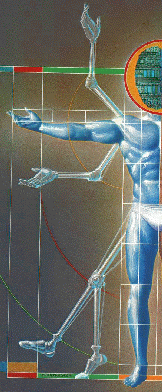

|
Osteoporosis is one of the noteworthy problems associated with anorexia, overtraining among distance athletes, menopause, sedentary lifestyle and ageing. The causes of and solutions to this disease generally are spoken about in terms of loss of various minerals from the bone matrix, leading to what is popularly called 'thinning of the bones'.
-
This 'thinning' or porosity is examined in terms of impaired or reduced mineralisation in the collagen substrate comprising the bones and solutions are offered in terms of revised supplemented nutrition, various hormones to aid re-mineralisation or resistance exercise to stimulate bone growth.
-
We learn that osteoporosis is associated with a greater tendencyfor
the bones to fracture. However, demineralisation would imply that there
is a greater collagen to mineral ratio in the bones, which should
render the bones more pliable and not more brittle. It would then
appear to be strange that fractures are more common among those whose
bones presumably contain less of the harder minerals which make them
stiffer and harder. On the basis of this simple logic, osteoporotic
people shoiuld be more 'rubbery' than more 'brittle' or rigid!
-
Does this not suggest that the term 'osteoporosis' may be somewhat
misleading and that it is not just loss of certain minerals which
compromises the strength and flexibility of the bones? If the bones
of the osteoporotic person, in 'becoming thinner' indeed become
thinner or less hypertrophied with respect to minerals AND collagen,
would such a concept not be closer to the truth in explaining the
dangers of osteoporosis? If osteoporotic bones really are
hypotrophic bones, with decreased mass and cross-sectional area, then
a tendency to easier fracture would be easier to explain.
-
If there is no noticeable osteo-hypotrophy, but a pathological change
in the physical structure of the bone, would this not offer a greater
likelihood of crystalline dislocation or disclination along a
newly-established 'fault-line' in the bones?
-
Maybe the entire simplistic concept of osteoporotic, demineralised or
'thinner' bones needs to be revised. Maybe a broader understanding
of the more subtle scientific research on the topic will provide us
with a better way of approaching this disease. Maybe the answers already
lie in the extensive literature on this topic, but we are missing
essential parts of the picture.
|



